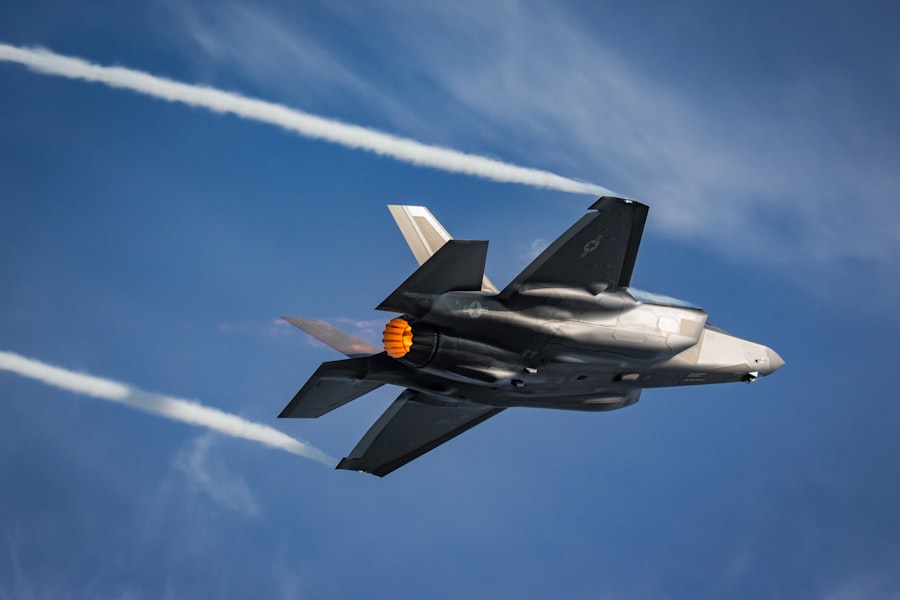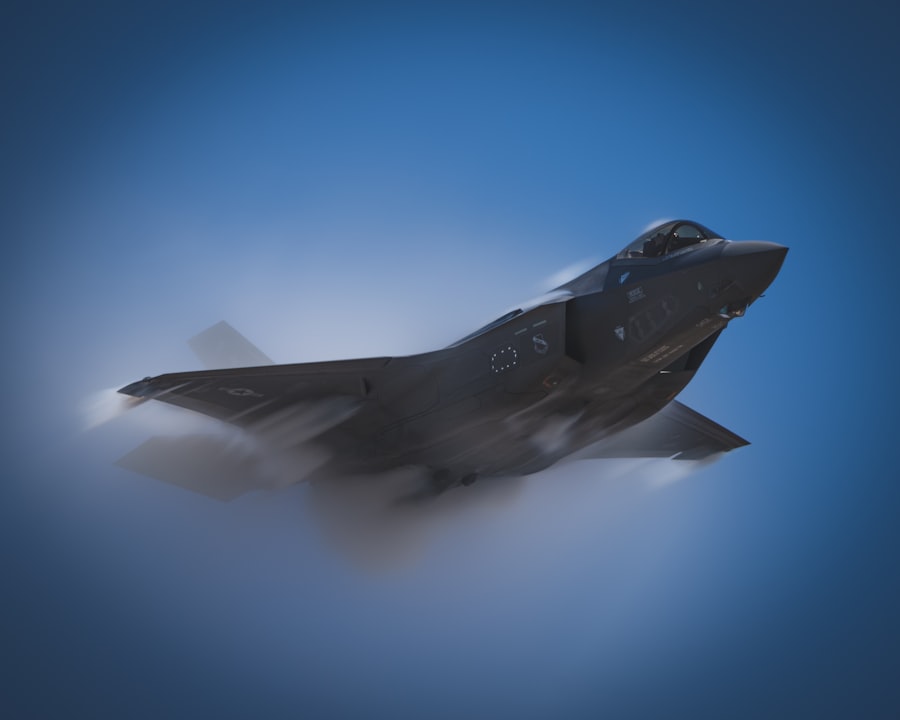The aerospace and defense market is a multifaceted sector that encompasses a wide range of activities, including the design, development, manufacturing, and maintenance of aircraft, spacecraft, and defense systems. This industry is not only pivotal for national security but also plays a significant role in global economic development. The aerospace segment includes commercial aviation, space exploration, and satellite technology, while the defense sector focuses on military equipment, cybersecurity, and intelligence systems.
The interdependence of these two segments creates a dynamic environment where technological advancements and geopolitical factors continuously shape the landscape. Historically, the aerospace and defense market has been characterized by substantial investments in research and development, driven by the need for innovation and efficiency. Governments around the world allocate significant budgets to defense spending, which in turn fuels advancements in aerospace technologies.
The market is also influenced by international collaborations, such as joint ventures between countries and partnerships between private companies and government agencies. As nations strive to enhance their capabilities in both commercial and military aviation, the aerospace and defense market remains a critical area of focus for policymakers, investors, and industry leaders alike.
Key Takeaways
- The aerospace and defense market is a dynamic and rapidly evolving industry with a wide range of opportunities and challenges.
- Current trends in the aerospace and defense industry include increasing demand for unmanned aerial vehicles, cybersecurity concerns, and a focus on sustainability and fuel efficiency.
- Emerging technologies such as additive manufacturing, artificial intelligence, and advanced materials are driving innovation in the aerospace and defense sector.
- Growth opportunities in the commercial aerospace sector include the expansion of air travel in emerging markets and the development of next-generation aircraft and propulsion systems.
- Key areas of growth and investment in the defense market include cybersecurity, space exploration, and the modernization of military equipment and infrastructure.
Current Trends and Challenges in the Aerospace and Defense Industry
The aerospace and defense industry is currently experiencing several notable trends that are reshaping its future. One of the most significant trends is the increasing emphasis on sustainability. As environmental concerns grow, manufacturers are under pressure to develop greener technologies.
This includes the production of fuel-efficient aircraft, the use of alternative fuels, and the implementation of sustainable manufacturing practices. Companies are investing in research to create electric and hybrid propulsion systems that could revolutionize air travel by reducing carbon emissions significantly. However, the industry also faces numerous challenges that complicate its growth trajectory.
Supply chain disruptions have become a pressing issue, particularly in the wake of the COVID-19 pandemic. The pandemic exposed vulnerabilities in global supply chains, leading to delays in production and increased costs. Additionally, geopolitical tensions have heightened uncertainty in defense spending, as nations reassess their military priorities in response to evolving threats.
The ongoing conflict in Ukraine, for instance, has prompted many countries to increase their defense budgets, while others are grappling with the implications of shifting alliances and military strategies.
Emerging Technologies and Innovations in Aerospace and Defense

Emerging technologies are at the forefront of transforming the aerospace and defense landscape. One of the most promising areas is artificial intelligence (AI), which is being integrated into various applications ranging from predictive maintenance to autonomous flight systems. AI algorithms can analyze vast amounts of data to optimize flight operations, enhance safety protocols, and improve decision-making processes in military operations.
For instance, AI-driven drones are being developed for reconnaissance missions, capable of processing real-time data to identify threats more efficiently than human operators. Another significant innovation is the advancement of unmanned aerial vehicles (UAVs), commonly known as drones. These versatile platforms are being utilized for a variety of purposes, including surveillance, cargo delivery, and even passenger transport in urban environments.
The development of advanced UAVs equipped with sophisticated sensors and communication systems has expanded their operational capabilities. Moreover, the integration of 5G technology is expected to enhance connectivity for UAVs, enabling real-time data transmission and improved control over long distances.
Growth Opportunities in the Commercial Aerospace Sector
| Metrics | Data |
|---|---|
| Market Size | Projected to reach 270 billion by 2027 |
| Annual Growth Rate | Estimated at 5.2% from 2020 to 2027 |
| Key Drivers | Increasing air travel, demand for fuel-efficient aircraft |
| Regional Growth | Asia-Pacific expected to have the highest growth rate |
| Investment Opportunities | Emerging markets, aircraft maintenance and repair services |
The commercial aerospace sector presents numerous growth opportunities as global air travel continues to rebound from pandemic-related disruptions. With an increasing middle class in emerging markets such as Asia-Pacific and Africa, demand for air travel is expected to surge over the coming years. Airlines are investing heavily in expanding their fleets to accommodate this growing demand, leading to increased orders for new aircraft from manufacturers like Boeing and Airbus.
The introduction of next-generation aircraft that offer improved fuel efficiency and passenger comfort is likely to drive further growth in this sector. Additionally, the rise of low-cost carriers has transformed the competitive landscape of commercial aviation. These airlines have made air travel more accessible to a broader audience by offering affordable fares without compromising on essential services.
This trend has prompted traditional carriers to reevaluate their business models and adopt more flexible pricing strategies. Furthermore, advancements in digital technologies are enabling airlines to enhance customer experiences through personalized services, streamlined booking processes, and improved operational efficiency.
Defense Market: Key Areas of Growth and Investment
In the defense sector, several key areas are poised for growth and investment as nations prioritize modernization efforts. Cybersecurity has emerged as a critical focus area due to the increasing frequency and sophistication of cyber threats targeting military infrastructure. Governments are investing heavily in developing robust cybersecurity frameworks to protect sensitive data and ensure operational continuity.
This includes enhancing capabilities for threat detection, response mechanisms, and training personnel to navigate complex cyber environments. Another area of significant investment is missile defense systems. As geopolitical tensions escalate, countries are seeking advanced technologies to protect against potential missile threats from adversaries.
This has led to increased funding for research and development of next-generation missile defense systems that utilize advanced radar technologies and interception capabilities. Additionally, there is a growing interest in hypersonic weapons—missiles that can travel at speeds exceeding Mach 5—which pose new challenges for existing defense systems.
Global Market Outlook and Regional Opportunities

The global aerospace and defense market is expected to witness robust growth over the next decade, driven by increasing defense budgets and rising demand for commercial air travel. North America remains a dominant player in this market due to its established aerospace manufacturing base and significant defense spending by the United States government. However, regions such as Asia-Pacific are emerging as key players as countries like China and India ramp up their investments in both commercial aviation and military capabilities.
In Europe, collaborative initiatives among member states are fostering innovation in aerospace technologies. The European Union’s Horizon 2020 program has allocated substantial funding for research projects aimed at enhancing aviation safety, sustainability, and efficiency. Additionally, countries like France and Germany are investing in joint defense projects to develop advanced military capabilities that can compete on a global scale.
Future Prospects and Potential Disruptions in the Aerospace and Defense Market
Looking ahead, the aerospace and defense market may face potential disruptions driven by technological advancements and changing geopolitical dynamics. The rise of space commercialization presents both opportunities and challenges for traditional aerospace companies. Private companies like SpaceX are redefining space exploration with innovative launch systems that reduce costs significantly.
This shift could lead to increased competition among established players while also opening new avenues for collaboration between public agencies and private enterprises. Moreover, advancements in quantum computing could revolutionize various aspects of aerospace and defense operations. Quantum technologies have the potential to enhance data processing capabilities exponentially, enabling faster decision-making processes in military operations or improving simulations for aircraft design.
However, these advancements also raise concerns about security vulnerabilities as adversaries may seek to exploit quantum technologies for malicious purposes.
Strategies for Success in the Evolving Aerospace and Defense Industry
To navigate the complexities of the evolving aerospace and defense industry successfully, stakeholders must adopt proactive strategies that embrace innovation while addressing emerging challenges. Companies should prioritize investment in research and development to stay ahead of technological trends while fostering partnerships with startups that specialize in cutting-edge technologies. Additionally, organizations must remain agile in adapting their business models to respond to shifting market demands and geopolitical landscapes.
Furthermore, a focus on sustainability will be crucial as environmental regulations become more stringent globally. Companies that proactively integrate sustainable practices into their operations will not only comply with regulations but also appeal to environmentally conscious consumers and investors. By leveraging emerging technologies such as AI, UAVs, and quantum computing while addressing cybersecurity concerns, stakeholders can position themselves for long-term success in this dynamic industry landscape.


